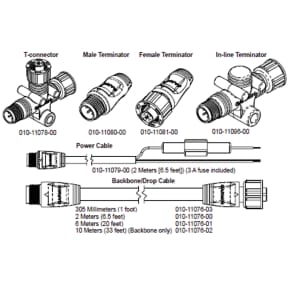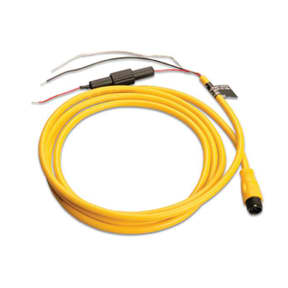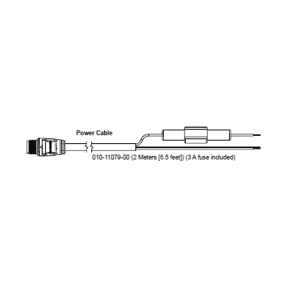



Description
An NMEA 2000 Network is easily created by connecting NMEA 2000 devices which communicate using basic plug-and-play cables and connectors.
Networks can be added to at any time in the future.
Garmin uses NMEA micro connectors on devices, sensors, and T-connectors. These follow NMEA 2000 standards, and are compatible with other NMEA 2000 micro connectors, cables, and NMEA 2000 devices from other manufacturers.
Garmin sensors are commonly packaged with a drop (connector) cable, a T-connector, and two terminators.
Garmin display units may also include additional NMEA 2000 components (such as a power cable).
The NMEA components included with a Garmin sensor or display are listed in the product documentation. A diagram on the product box shows which NMEA 2000 components are included.
• The main communication channel of a network is called a "backbone"
• Each device connects to the backbone with a T-Connector and a drop cable
• The backbone must have a source of power, and terminators (1 male and 1 female) must be installed at each end of the backbone for it to function properly
• The NMEA 2000 components below can be used in building, or adding to, your NMEA 2000 compatible network
The basics of NMEA Networking —
Although the following video refers to the now discontinued Garmin GMI10 Instrument Display (replaced by the GMI 20)... it is a great little 4 minute video illustrating the do-it-yourself ease and simplicity of creating a "plug-'n-play" NMEA 2000 Network for displaying the data provided by installed sensors - depth, speed, wind, fuel, etc. - on your chartplotter or other network compatible display, in this case the GMI 20 Instrument Display.



